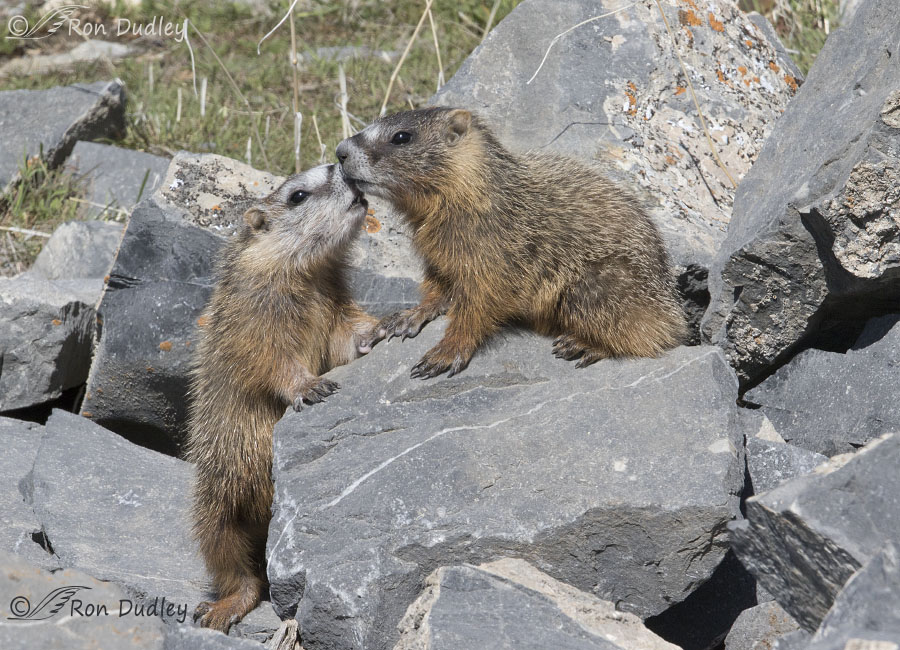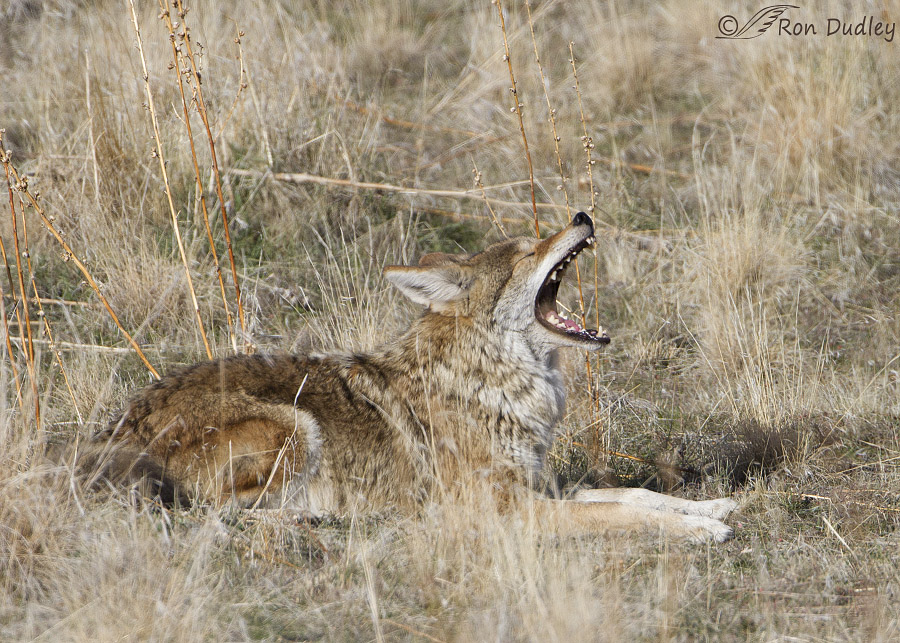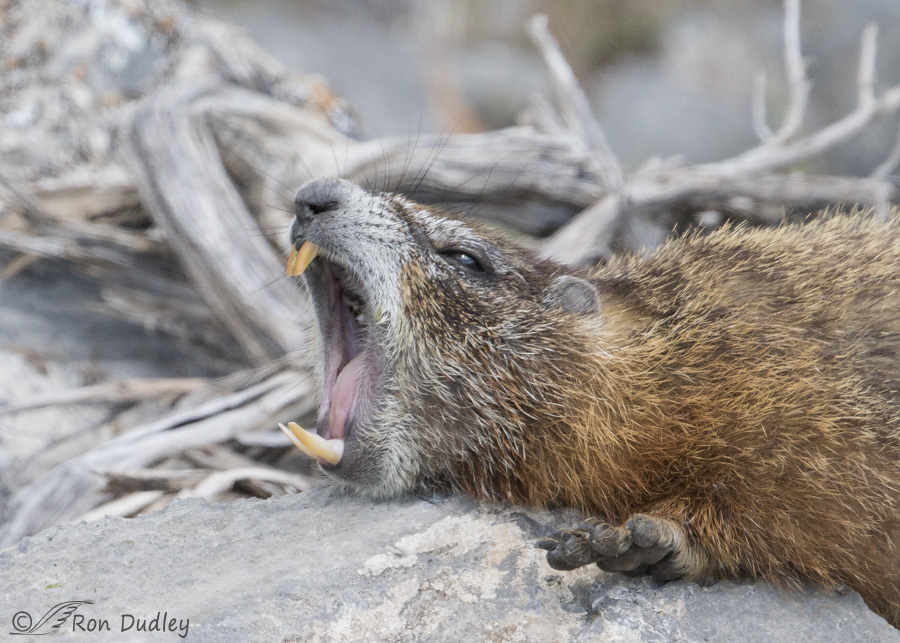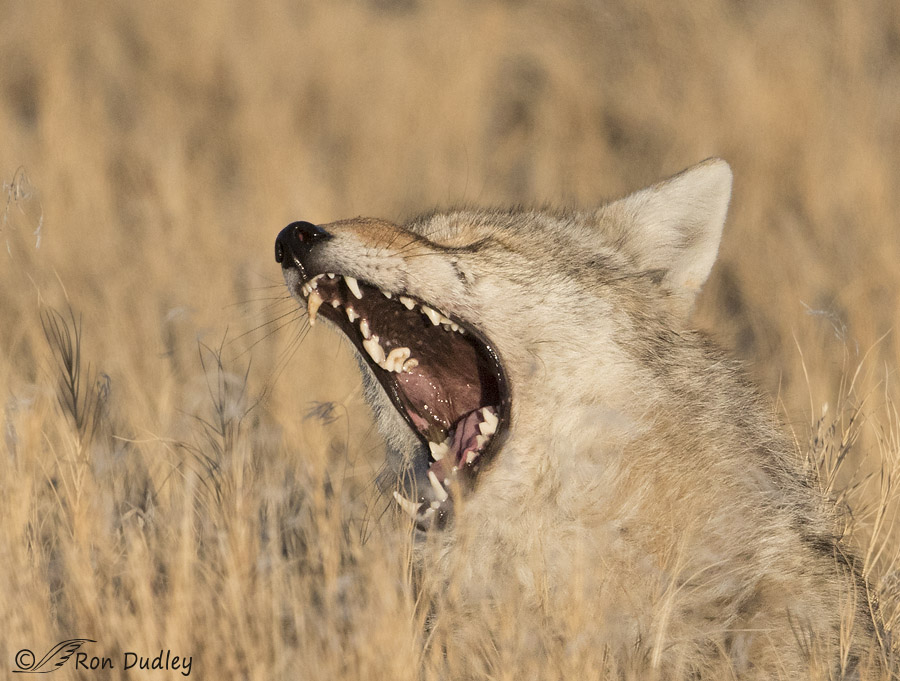Tag: teeth
Coyote Showing A Mouthful Of Teeth
Yellow-bellied Marmot – A Real Ham For The Camera
Another (very different) Look At The Injured Coyote
American Kestrel Eating “Grit”
I don’t have any beautiful photos today but I do have some interesting behavior. Yesterday morning, I came across this female American Kestrel sitting in the middle of a large, isolated, gravel parking lot/camping area on Antelope Island. I thought it was an unusual resting place for a kestrel and as I approached her in my pickup I was even more intrigued when she didn’t immediately fly off, as this species typically does. She repeatedly took a couple of wingbeats and flew a few feet, but never far. She was, for some reason, reluctant to leave and at first I couldn’t figure out why. I was eventually able to work my way close enough to her to see that she was swallowing small stones from the gravel parking lot. This was a behavior that I’d never seen before in a raptor, though I’ve often seen it in other birds. As a biologist, I’m aware of the general function of the gizzard in birds – that seed eating birds swallow “grit” to act as teeth (birds have no true teeth, presumably a weight saving adaptation for flight) within the grinding gizzard so they can physically break down their hard food and prepare it for chemical digestion. And it had been my understanding that raptors don’t consume grit because they don’t eat seeds. The flesh they consume is easily digested and doesn’t need to be physically broken down first. So why is this little falcon swallowing small stones? I decided to ask Mark Runnels, an extremely knowledgeable master falconer from Oklahoma and…
Sometimes the Prey Bites Back
I hope you’ll bear with me but this post will be more about behavior than image quality as I just didn’t have a good light angle for this little drama. As I’ve said elsewhere on this blog, one of my primary goals is to document interesting behaviors and at times that will take priority over the quality of the images. When Rough-legged Hawks dive on prey it can be fairly dramatic. Typically they hover high up over the potential prey for a few moments, then dive fast and at a fairly steep angle. Occasionally they seem to hit the ground so hard that it rattles my teeth, almost making me expect them to bounce on impact. 1/2000, f/7.1, ISO 500, 500 f/4, 1.4 tc This morning I watched this hawk hover, then dive. I think you can see from the wing position that this bird was still traveling at a good clip and at a fairly steep angle when it was only a couple of feet from the ground. The prey was on a hill above me and buried in this vegetation so I didn’t see the impact. 1/2000, f/7.1, ISO 500, 500 f/4, 1.4 tc Often these attempts at prey are unsuccessful but this time the hawk caught a vole (along with a talon-full of debris). The bird came out of the grasses directly toward me but then turned to its left to give me a side view. 1/1600, f/7.1, ISO 500, 500 f/4, 1.4 tc This little vole had a bucket-full of attitude and didn’t want to go down…





